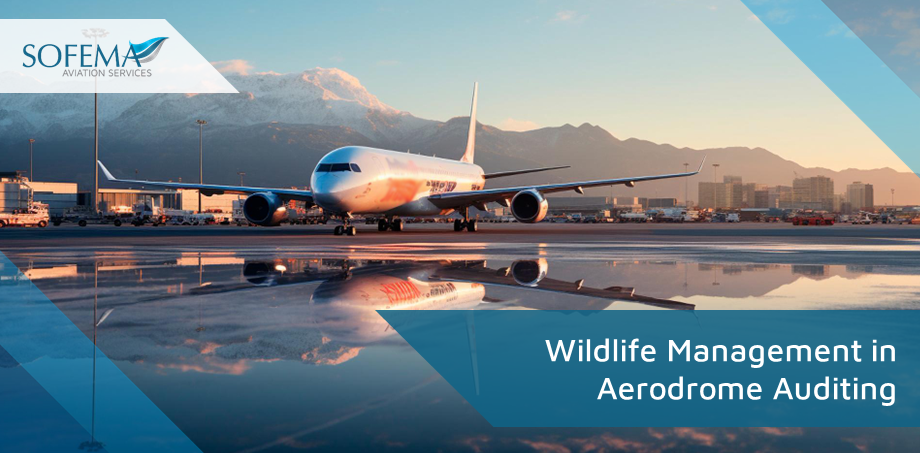Sofema Aviation Services (SAS) at www.sassofia.com considers a wide range of aerodrome auditing aspects across various business sectors and components, addressing specific issues and challenges for each area.
For each element, issues and challenges are addressed to ensure the effectiveness of EASA compliance following EASA and ICAO requirements, whereby certified aerodromes must demonstrate and continually monitor compliance through audits and inspections.
Wildlife Management
Ensuring best practices in auditing and oversight of European airports, especially in the context of EASA (European Union Aviation Safety Agency) compliance, is crucial for maintaining safety and operational efficiency. One of the key areas of concern is wildlife management, as bird and wildlife strikes can pose significant risks to aircraft operations.
The airport should have key performance indicators (KPIs) related to wildlife management, such as the number of bird strikes or the effectiveness of mitigation measures.
Auditing Wildlife Management at European Airports:
Effective wildlife management at European airports is crucial for ensuring the safety of aircraft operations.
Regular audits, in line with EASA guidelines and best practices, can help identify areas of improvement and ensure that airports are taking all necessary measures to mitigate wildlife hazards.
- Ensure that the airport’s wildlife management practices comply with EASA regulations and any additional local or national regulations.
- Auditors should ensure that the airport has thoroughly assessed bird and wildlife hazards specific to its location, surroundings, and operational characteristics.
Wildlife Management Plan (WMP):
- Ensure that the airport has a documented WMP, detailing the strategies and measures to mitigate wildlife hazards.
- The WMP should involve various stakeholders, including airport operations, air traffic control, and local environmental agencies.
- Airport personnel involved in wildlife management should receive appropriate training, and this should be documented and updated regularly.
Wildlife Monitoring & Reporting:
The airport should conduct regular patrols and surveillance to monitor wildlife activity, especially during peak periods of bird migration or breeding.
- Bird and Wildlife Strike Reporting – Ensure a system is in place for reporting bird and wildlife strikes and that these reports are analyzed to identify trends and areas of concern.
Wildlife Mitigation Measures:
- Habitat Management: Ensure that the airport’s landscaping and waste management practices do not attract wildlife. This includes managing water bodies, grass height, and vegetation.
- Active & Passive Control: The airport should have measures in place for both active (e.g., using trained birds of prey, pyrotechnics) and passive (e.g., fencing, netting) wildlife control.
- Coordination with Local Authorities: Engage with local authorities to manage factors outside the airport’s boundaries that might attract wildlife, such as landfills or wetlands.
Next Steps
Follow this link to our Library to find & download related documents for Free.
Please see EASA Airports Aviation Compliance Management and Auditing – 4 Days course available at www.sassofia.com for additional guidance please email team@sassofia.com
Tags:
EASA, ICAO, Aerodrome, SAS blogs, Aerodrome Audit, Aerodrome Auditing, European airports, Wildlife Management, Wildlife, Wildlife Monitoring, Wildlife Mitigation Measures





